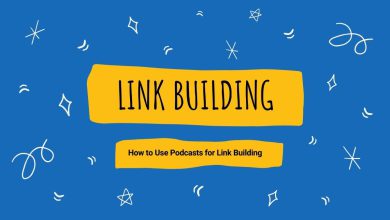
React is a popular JavaScript library used for building dynamic user interfaces. However, due to its nature as a client-side rendering technology, React can pose some challenges for search engine optimization (SEO). In this blog post, we will explore some best practices for optimizing your React website for search engines.
1. Server-Side Rendering:
Server-side rendering (SSR) is a powerful technique for improving website performance, search engine optimization (SEO), and user experience. In traditional client-side rendering, the browser requests the HTML content from the server and then renders it using JavaScript. This can result in slower page loading times as the browser has to wait until all the JavaScript is loaded before displaying content. With SSR, however, the server sends pre-rendered HTML directly to the client, which significantly improves load times.
One of the main benefits of SSR is improved SEO. Search engines like Google prefer websites with fast loading times as they provide a better user experience. By using SSR, websites can improve their search rankings by providing faster page loads and reducing bounce rates. Additionally, SSR allows for better indexing of content by search engines as they can crawl pre-rendered pages more easily than dynamic pages that rely on JavaScript.
2. Optimize Your Meta Tags:
One of the most effective ways to achieve this is by optimizing your meta tags, which include title tags and meta descriptions. These meta tags provide crucial information about your website to search engines like Google and Bing.
Title tags are the first thing that users see when they look for information on search engines. They give a brief overview of what your page is all about, using carefully chosen keywords that are relevant to your content. By optimizing your title tags, you can make sure that potential visitors get an accurate idea of what they will find on your website before they even click through.
Meta descriptions, on the other hand, provide more detailed information about what visitors can expect from each page of your website. This includes both the content itself and any additional features or benefits that might be relevant to their needs.
3. Use Semantic HTML:
In today’s digital age, search engine optimization (SEO) is critical for any website to rank high in search results. One of the essential components of SEO is using semantic HTML tags. Semantic HTML tags provide meaning and context to your website’s content, allowing search engines to better understand what your page is about. This helps improve the chances of your website showing up higher in relevant search results.
If you’re using React to build your website, it’s important to ensure that you’re using semantic HTML tags correctly. React can sometimes generate unnecessary div elements or generic classes that don’t add meaning and structure to your content. By taking the time to use proper semantic HTML tags, you can make sure that search engines are interpreting your content accurately.
Not only does using semantic HTML improve SEO, but it also benefits accessibility for users with disabilities who rely on assistive technologies such as screen readers or voice commands.
4. Implement Lazy Loading:
Lazy loading is a simple yet powerful technique that can drastically improve your website’s performance. By only loading images and other resources when they are needed, you can reduce the amount of time it takes for your website to load, which in turn can lead to higher search engine rankings and increased user engagement. This is particularly important for websites built using React, as it allows developers to optimize their code and ensure that their pages load quickly.
One of the main benefits of lazy loading is that it can help improve SEO. When search engines crawl your site, they take into account a wide range of factors, including page speed and user experience. By implementing lazy loading on your site, you can ensure that your pages load quickly and smoothly, which will not only improve your search engine rankings but also keep users engaged with your site for longer periods of time.
5. Utilize Structured Data:
Structured data has increasingly become a vital component of search engine optimization (SEO) strategies. It refers to the standardized format for providing information about your website’s content to search engines. By implementing structured data, you can efficiently communicate with search engines through codes that help them understand what your page is all about. This way, they can easily display relevant information to users searching for specific queries. Overall, the use of structured data helps improve the visibility and ranking of websites in search engine results pages.
React SEO is one aspect where structured data comes in handy. React is a JavaScript library used for building user interfaces on web applications while providing an excellent user experience. However, when it comes to SEO, React faces some challenges due to its dynamic nature and client-side rendering approach that may affect how Google crawls and indexes web pages built with it.
Conclusion:
While React can present some challenges for SEO, there are many best practices you can implement to improve your website’s performance. By utilizing server-side rendering, optimizing your meta tags, using semantic HTML, implementing lazy loading, and utilizing structured data, you can optimize your React website for search engines and improve its visibility in search results. Remember to regularly monitor and optimize your website’s SEO to ensure it continues to perform well over time.




